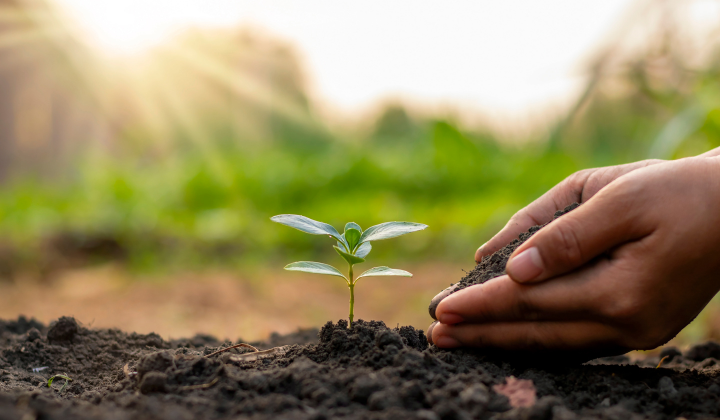
– Manuscript –
The month of May is the best planting time in many areas in the northern half of the world.
Many gardeners are visiting garden centers now to buy plants. Those who have grown plants from seeds indoors may be getting ready to plant them in the garden at about this time.
However, seedlings cannot usually go straight from an indoor growing area to outdoor beds and borders without risk. They need to be “hardened off” first.
That means slowly introducing the plants to environmental conditions like sunlight, wind, and changes in temperature that they have not yet experienced. If plants are not hardened off enough, they could get burned by the sun or go into shock from more wind exposure or lower temperatures than they are used to. Stressed plants can recover. But the process usually sets their growth back by a few weeks.
Hardening indoor plants
Start hardening your plants by placing them outdoors in a sheltered area that is partly protected from the sun. Do this for increasing periods each day for about a week before planting them in the garden. Protection from the sun is important. Even the window that gets the most sun in your home or an electric growing light cannot compete with the strength of direct sunlight.
Choose a day after the danger of frost has passed and when the temperature is above seven degrees Celsius. Place plants outside for an hour, set a timer, and then bring them back inside to a warm spot, under electric plant lights is the best choice.
Repeat this on the second day for two hours. Add an hour of outdoor time each day for a week. After that, they can safely be planted in their permanent homes, whether in the ground, a raised bed, or a container.
Follow the weather and keep an eye on conditions throughout the process. Bring plants inside if rain or severe wind threatens during their outdoor time.
Do not be concerned if there is no protection from the sun in your garden. You can harden your plants under an outdoor table, for example. Under large outdoor plants works equally as well. If you have none of those, you can protect your plants from the sun with something like an umbrella.
If the weather is not hot, you can even plant your seedlings directly in the ground. Then harden them by covering each individually with a large plastic container with its bottom and top removed. Burying the bottom in a few centimeters of soil will hold the container in place. You can water plants through the pouring hole at the top.
Remove the container for each day’s hardening-off period. And then set it back into place and secure it into the soil afterward. Watch your plants carefully because high temperatures and strong, direct sunlight might “cook” them. Follow weather conditions and use your best judgement before planting seedlings directly in the garden.
If you started plants in a greenhouse, they have already been growing in direct sunlight, so the process is easier. Open the windows for a few hours each day for about a week. Then, move seedlings to a sheltered outdoor area for two hours the first day and four hours the second day. After that, they should be ready to be planted outdoors.
Words in This Story
garden – n. an area of ground where plants (such as flowers or vegetables) are grown
seedling –n. a young plant recently grown from a seed
exposure – n. the fact or condition of being affected by something or experiencing something
frost – n. the occurrence of weather that is cold enough to cause water to freeze and frost to form
umbrella – n. a device that is used for protection from the rain and sun
greenhouse – n. a building or part of a building that has glass walls and a glass roof and that is used for growing plants
*This article has been edited and reprinted from VOA Learning English with permission from Voice of America (VOA) for use in English language materials.
